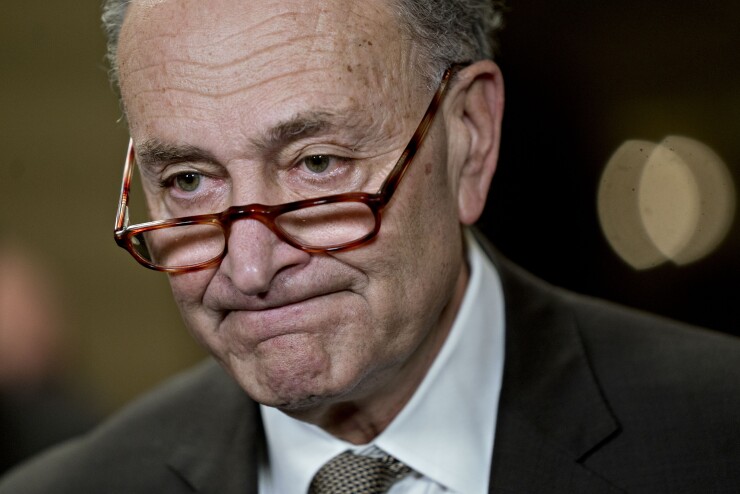New York’s Metropolitan Transportation Authority has won another round of federal aid, this time a $6.2 billion infusion that marks the Federal Transit Administration’s largest-ever grant.
The grant is aimed at helping the cash-strapped agency maintain service and preserve the agency’s 66,000 jobs, the FTA said. The money comes from the American Rescue Plan Act, which featured more than $30 billion for public transportation. No local share is required, the FTA said.
“This $6 billion gives them deep, deep liquidity. Now. The bottom line is that without the money that we were able to get, the subway system never would have bounced back,” Sen. Chuck Schumer, D-NY, said Wednesday during a virtual press conference announcing the grant. “It allows the MTA to continue on its capital plan."

It’s the latest round of federal stimulus for the transit agency, which is the largest in the U.S. and, with $50 billion of debt, one of the top issuers in the muni market.
It received $4 billion under the April 2020 CARES Act and $4.1 billion from the Coronavirus Response and Relief Supplemental Appropriations Act of December 2020. The Infrastructure Investment and Jobs Act will provide another $10 billion to the MTA.
MTA officials have previously warned that the federal aid would run out by 2025.
The $6.2 billion grant “enables us to avoid taking money away from the capital program,” Acting Chair and CEO Janno Lieber told local television reporters Thursday. “In the near term, it has allowed us to maintain a balanced budget,” he said. But “at some point the federal aid runs out. We need a long-term plan; the ridership should not have the bear the cost of the budget gap opened up” by the pandemic.
From a buyer’s perspective, the latest round of aid does little to move the credit needle, said Mark Tenenhaus, director of research for RSW Investments.
“They’re draining cash,” Tenenhaus said. “The capital needs are enormous. And congestion pricing is a drop in the bucket,” he said, referring to the agency’s plan to cover part of its capital plan with a new congestion pricing strategy. “There’s nothing here that’s going to uplift the credit until, if and when, ridership gets back to gets back to normal or a new normal.”





